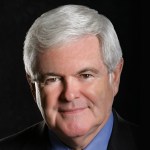The public reaction to the end of affirmative action and college university admissions was like the dog that didn’t bark or protest or complain or pushback or raise hell. What happened? Why wasn’t there more of an outcry when those who oppose taking race into account to ease racial inequity finally succeeded in toppling a policy they never liked? Not from the beginning? Well, I have a theory. Before I share it. Here’s a reminder of how we got here. It’s been nearly three months since the majority of the Supreme Court made up of six conservative justices bought in to the fantastical argument offered up by the conservative activist group students for fair admissions. The group claim that Asians who make up between 20 and 30% of the student population at many top universities are the new oppressed minority in suing Harvard and the University of North Carolina over their admissions policies. Plaintiffs demanded a colorblind process and a decision head down at the end of June, the right wing justices obliged, disregarding the facts and the law, they let politics be their guide in striking down the practice. Supporters of affirmative action predicted that people of color especially Latinos and African Americans would take to the streets and express their outrage, why they might even it was speculated, take their complaints directly to the steps of the Supreme Court and put the spotlight on the Judiciary. What happened? Not much, there was nary a whimper in response to this really momentous Supreme Court decision. Frankly, I myself expected more. Affirmative Action college admissions is a big deal. It’s been around for almost 60 years, starting up a few years after affirmative action contracting began in 1961. It was in 1970s, and 80s, considered a very controversial topic. But time passes and passions cool. In 2023, there are now at least three generations that have come along since the invention of affirmative action, Generation X, the millennials, and Generation Z. Why do you suppose affirmative action means so little to most of the people in those groups who are now between the ages of 15 and 55? Well, these generations never bought into affirmative action, and so they’re not invested in it. It was probably much different in the 1970s. When Black and Brown members of the baby boom now in their 70s, or the silent generation now in their 80s used affirmative action to break into the police department or state government, or maybe even a corporate job. They usually felt grateful for the opportunity and they created affirmative action for the break. By the time I entered the job market after college in the 1990s, the drawbridge had come up a bit. Corporations, media companies, law firms and alike had figured out they have to lower standards in order to sprinkle a little color in their workplace. They could just continue to hire badass super qualified people, including a few minorities here and there and call it macaroni. Consequently, those who got through the gate felt less and less indebted to affirmative action. They knew that they had gotten there on their own steam. And so they didn’t feel like they had to go through life bending the knee to white liberal bureaucrats. And there was another thing, the numbers and percentages, the population of Latinos and African Americans in the United States kept growing over the last 30 years. But only a relative few were admitted to university X or higher bike Corporation. Why? So the constituency of affirmative action began to shrink, relative to the overall non white population in the country. This meant that, unlike the current debate over easing student loan debt, in which 10s of millions of people feel as if they have a personal stake, the debate over whether or not we should preserve affirmative action is confined mainly to the elites at all up and it’s easy to see why, when the Supreme Court gutted affirmative action college admissions, few people were angry. Few people even noticed
















Ruben Navarrette
Columnist, host & author
Commentary
Our commentary partners will help you reach your own conclusions on complex topics.
Is the US looking for a war?
11 hrs ago
Peter Zeihan
How future generations could shift US support for Israel
Yesterday
Peter Zeihan
Why election of European Commission president is so important
Wednesday
Peter Zeihan
‘Both completely corrupt’: What Americans think of Biden, Trump
Tuesday
Dr. Frank Luntz
Why the lackluster response to affirmative action ruling?
Ruben Navarrette
Columnist, host & author
By Straight Arrow News
The United States Supreme Court recently struck down affirmative action in admissions processes for U.S. colleges and universities. It was the biggest defeat for affirmative action advocates in recent history.
Straight Arrow News contributor Ruben Navarrette remarks on the unimpressive public response to such a historic defeat and explores some of the reasons why the public backlash against the decision has been relatively calm and quiet.
Supporters of affirmative action predicted that people of color, especially Latinos and African Americans, would take to the streets and express their outrage, why they might even, it was speculated, take their complaints directly to the steps of the Supreme Court and put the spotlight on the judiciary.
What happened? Not much. There was nary a whimper in response to this really momentous Supreme Court decision. Frankly, I myself expected more.
Affirmative action college admissions is a big deal. It’s been around for almost 60 years, starting up a few years after affirmative action contracting began in 1961. It was in the 1970s, and 80s, considered a very controversial topic. But time passes and passions cool.
In 2023, there are now at least three generations that have come along since the invention of affirmative action: Generation X, the millennials, and Generation Z. Why do you suppose affirmative action means so little to most of the people in those groups who are now between the ages of 15 and 55? Well, these generations never bought into affirmative action, and so they’re not invested in it.
The public reaction to the end of affirmative action and college university admissions was like the dog that didn’t bark or protest or complain or pushback or raise hell. What happened? Why wasn’t there more of an outcry when those who oppose taking race into account to ease racial inequity finally succeeded in toppling a policy they never liked? Not from the beginning? Well, I have a theory. Before I share it. Here’s a reminder of how we got here. It’s been nearly three months since the majority of the Supreme Court made up of six conservative justices bought in to the fantastical argument offered up by the conservative activist group students for fair admissions. The group claim that Asians who make up between 20 and 30% of the student population at many top universities are the new oppressed minority in suing Harvard and the University of North Carolina over their admissions policies. Plaintiffs demanded a colorblind process and a decision head down at the end of June, the right wing justices obliged, disregarding the facts and the law, they let politics be their guide in striking down the practice. Supporters of affirmative action predicted that people of color especially Latinos and African Americans would take to the streets and express their outrage, why they might even it was speculated, take their complaints directly to the steps of the Supreme Court and put the spotlight on the Judiciary. What happened? Not much, there was nary a whimper in response to this really momentous Supreme Court decision. Frankly, I myself expected more. Affirmative Action college admissions is a big deal. It’s been around for almost 60 years, starting up a few years after affirmative action contracting began in 1961. It was in 1970s, and 80s, considered a very controversial topic. But time passes and passions cool. In 2023, there are now at least three generations that have come along since the invention of affirmative action, Generation X, the millennials, and Generation Z. Why do you suppose affirmative action means so little to most of the people in those groups who are now between the ages of 15 and 55? Well, these generations never bought into affirmative action, and so they’re not invested in it. It was probably much different in the 1970s. When Black and Brown members of the baby boom now in their 70s, or the silent generation now in their 80s used affirmative action to break into the police department or state government, or maybe even a corporate job. They usually felt grateful for the opportunity and they created affirmative action for the break. By the time I entered the job market after college in the 1990s, the drawbridge had come up a bit. Corporations, media companies, law firms and alike had figured out they have to lower standards in order to sprinkle a little color in their workplace. They could just continue to hire badass super qualified people, including a few minorities here and there and call it macaroni. Consequently, those who got through the gate felt less and less indebted to affirmative action. They knew that they had gotten there on their own steam. And so they didn’t feel like they had to go through life bending the knee to white liberal bureaucrats. And there was another thing, the numbers and percentages, the population of Latinos and African Americans in the United States kept growing over the last 30 years. But only a relative few were admitted to university X or higher bike Corporation. Why? So the constituency of affirmative action began to shrink, relative to the overall non white population in the country. This meant that, unlike the current debate over easing student loan debt, in which 10s of millions of people feel as if they have a personal stake, the debate over whether or not we should preserve affirmative action is confined mainly to the elites at all up and it’s easy to see why, when the Supreme Court gutted affirmative action college admissions, few people were angry. Few people even noticed
No one is innocent in Trump assassination attempt
After the assassination attempt on former President Donald Trump, both Democratic and Republican leaders have called for reducing divisive rhetoric. Some Republicans blame the shooting on the language Democrats used in attacking Trump. Meanwhile, some prominent Republican lawmakers, such as Rep. Elise Stefanik, R-N.Y., have used similar rhetoric, calling Biden “a clear and present threat…
Tuesday
America must fix its broken Supreme Court
The U.S. Supreme Court was envisioned by America’s founding fathers as an independent judiciary separate from the political world, designed as a fair arbiter of the law. But the 6-3 conservative majority of today’s Supreme Court has issued a number of impactful, partisan and unpopular opinions on everything from abortion access to presidential power, triggering…
Jul 16
Despite Biden’s stumble, rambling Trump can’t win debate
The first presidential debate of 2024 resulted in what many believe was a clear winner and loser. President Joe Biden’s performance was universally panned, affecting his fundraising efforts and intensifying calls for his ousting. Meanwhile, former President Donald Trump, despite being criticized for his false claims during the debate, has kept a low profile, opting…
Jul 9
Why Republicans will never shut down US-Mexico border
A group of Republican senators expressed “grave concerns” to President Biden over his recent executive order that would provide a path to citizenship to approximately 500,000 people who have been in the country for a decade or more and are also married to United States citizens. The GOP lawmakers argued that Biden’s immigration relief “directly contravenes…
Jul 2
Why Democrats’ immigration playbook not working with Latino voters
In June 2012, as President Barack Obama campaigned for reelection, he ordered immigration enforcement agents to defer action against those who had arrived in the United States as children. This executive action, known as DACA, offered a path to work permits for hundreds of thousands of undocumented immigrants. That November, Obama cruised to reelection, beating…
Jun 25
Underreported stories from each side
Group accuses Pa. teachers union of illegally using money to back Shapiro’s 2022 campaign
8 sources | 0% from the left
Getty Images
Some House Republicans slam Vance as Trump’s VP pick: ‘The worst choice’
8 sources | 0% from the right
Reuters
Latest Stories
Congress still trying to figure out how to reduce wasteful military spending
Watch 2:29
6 hrs ago
US Navy, Air Force making waves with new weapons at RIMPAC
Watch 6:03
6 hrs ago
Israeli PM Netanyahu meets with Trump at Mar-a-Lago
Watch 2:54
6 hrs ago
Growing US nuclear power resurgence reaches the nation’s heartland
Watch 1:19
7 hrs ago
Beer from the sun, other solar thermal projects get government funding
Watch 2:04
7 hrs ago
Popular Opinions
In addition to the facts, we believe it’s vital to hear perspectives from all sides of the political spectrum.
Trump has an excellent opportunity with Black voters
12 hrs ago
Star Parker
Don’t fall for GOP’s cheap racist attacks on Kamala Harris
13 hrs ago
Dr. Rashad Richey
Americans must reject Trump to defend our democracy
Yesterday
Jordan Reid
Why all the changes in European parliamentary governments?
Wednesday
Newt Gingrich